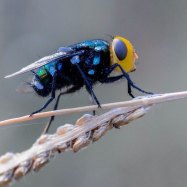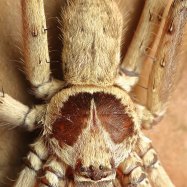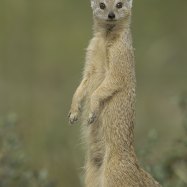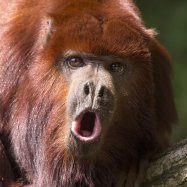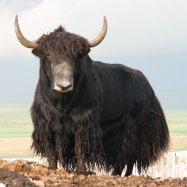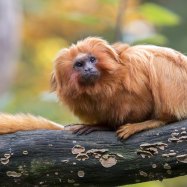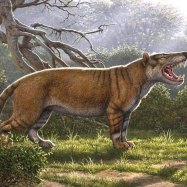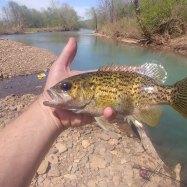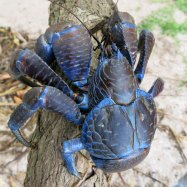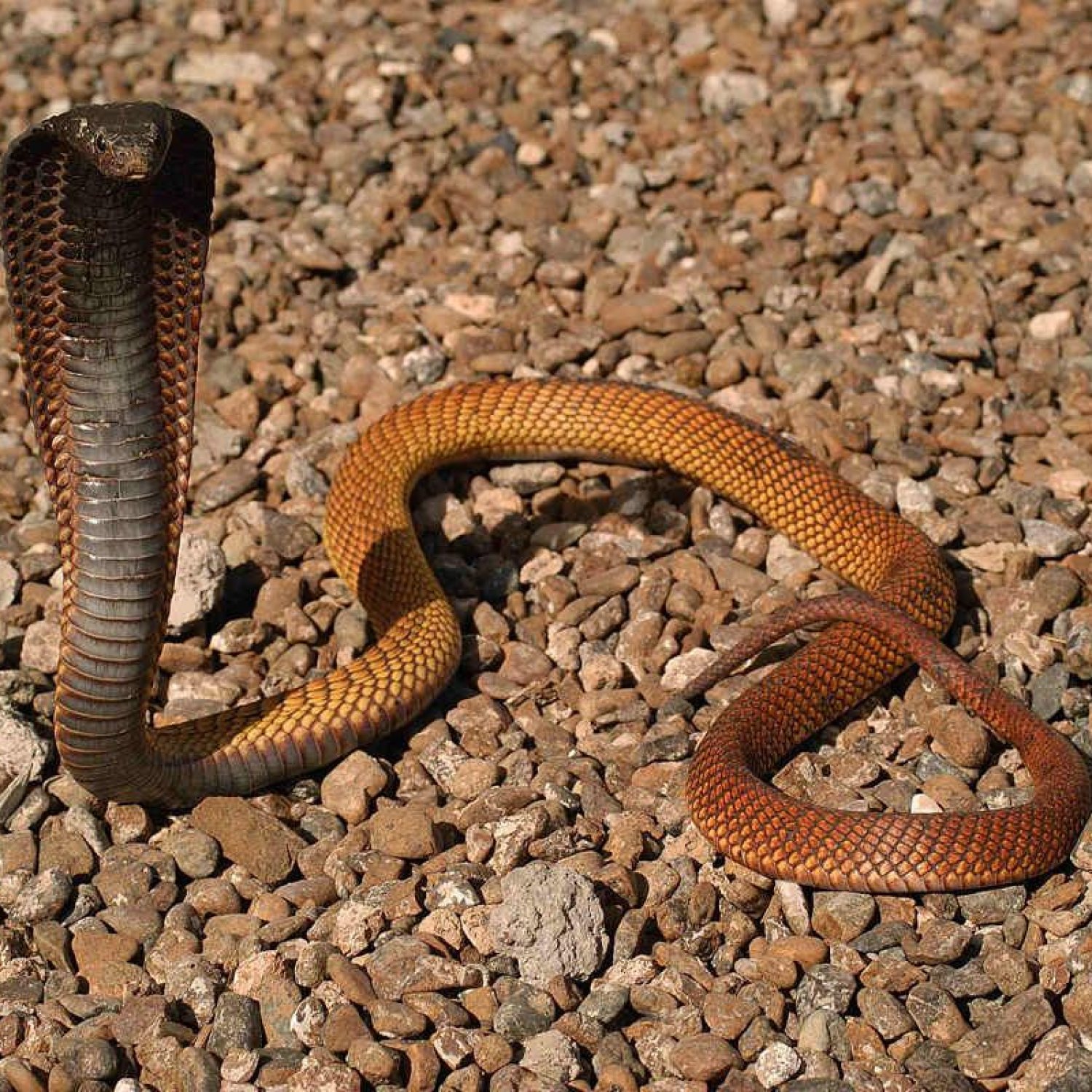
Egyptian Cobra
Approximately 1.2-2.5 meters (4-8 feet)
The Egyptian cobra is a long and slender snake that can reach up to 2.5 meters in length. It is primarily found in Egypt and other countries in the Middle East, such as Sudan and Saudi Arabia. These highly venomous snakes belong to the Elapidae family and have a distinctive hood on their necks. If you ever come across one, it's best to keep your distance and admire its beauty from afar.
Animal Details Summary:
Common Name: Egyptian Cobra
Kingdom: Animalia
Habitat: Deserts, savannas, grasslands, and semi-arid regions
The Deadly Egyptian Cobra: An Elusive Predator of the Desert
The Egyptian Cobra, also known as Naja haje, is a fascinating and dangerous snake that inhabits the deserts, savannas, grasslands, and semi-arid regions of Northern and Central Africa, as well as parts of the Middle East. This elusive predator has captured the attention of many, with its unique physical features and deadly venom. In this article, we will explore the various aspects of this remarkable snake and learn more about its behavior, habitat, and characteristics.A Closer Look at the Egyptian Cobra
The Egyptian Cobra belongs to the Animalia kingdom, the Chordata phylum, and the Reptilia class Egyptian Cobra. It is a member of the Squamata order and is part of the Elapidae family, which includes other venomous snakes such as cobras and mambas. As its name suggests, the Egyptian Cobra is native to Egypt, and can also be found in countries such as Sudan, Libya, Saudi Arabia, and Yemen.One of the defining features of the Egyptian Cobra is its distinctive coloration. It is usually dark brown or black with a lighter underside, and has characteristic hood patterns that extend from the neck to the head. This pattern serves as a warning to potential predators, as the cobra can raise its hood when threatened to make itself appear larger and more intimidating.
The body of the Egyptian Cobra is slender and elongated, with a relatively short tail. This allows it to move swiftly through its environment and chase down its prey with ease. The cobra can grow to lengths of approximately 1.2-2 Ermine.5 meters (4-8 feet), making it one of the larger species of venomous snakes in the world.
A Lethal Predator
Egyptian Cobras are highly venomous and are responsible for a significant number of snakebite fatalities in their native range. They are classified as highly dangerous and should be approached with caution at all times. Despite this, the Egyptian Cobra is not an aggressive snake and will typically try to avoid confrontation if given the chance.Feeding on a diet of small mammals, birds, and reptiles, the Egyptian Cobra employs an ambush-style hunting method. It will patiently wait for its prey to come within striking distance before launching a swift and deadly attack. Once its venomous fangs have injected the potent neurotoxin into a victim, the cobra will track and consume its prey.
Interestingly, the Egyptian Cobra does not have to swallow its prey whole, unlike other snakes. It has the unique ability to stretch its jaw to up to 160°, allowing it to consume larger prey. This efficient method of feeding helps the cobra maintain its energy levels in the sometimes harsh and unforgiving desert environment.
Habitat and Distribution
As mentioned earlier, the Egyptian Cobra is native to Egypt, but it also has a widespread distribution across Northern and Central Africa, as well as parts of the Middle East. It has adapted well to various arid environments, such as deserts, savannas, grasslands, and semi-arid regions. This makes it a versatile and highly successful predator in its habitat.One of the reasons the Egyptian Cobra can thrive in such environments is its remarkable ability to regulate its body temperature. As a cold-blooded reptile, it relies heavily on external heat sources to warm its body and maintain its metabolism. In the scorching deserts, the cobra is often seen basking in the sun, while in cooler areas, it may seek shelter under rocks or in burrows.
The Threats Facing the Egyptian Cobra
Despite its deadly reputation, the Egyptian Cobra faces numerous threats in the wild. This includes habitat loss due to human encroachment, hunting for their skins and as a source of traditional medicine, and accidental killings by humans. The rise of the illegal pet trade has also become a significant issue, with many cobras being poached from the wild and sold as exotic pets.Conservation efforts are underway to protect this species and ensure its survival in the wild. This includes the creation of protected areas and education programs to raise awareness about the importance of preserving the balance of these ecosystems and the impact of human activity on the Egyptian Cobra's habitat.
Ancient Depictions and Mythology
The Egyptian Cobra has played a significant role in Egyptian culture and mythology since ancient times. In ancient Egyptian mythology, the cobra was was worshipped as a protector of the pharaohs and was associated with the ancient goddess, Wadjet. It was also feared for its potent venom and was often depicted as a symbol of power, protection, and royalty.The cobra was also used in religious ceremonies and rituals, with priests wearing headpieces in the shape of a cobra's hood as a symbol of their status. Mummies of cobras have also been found in ancient Egyptian tombs, giving further evidence of their significance in the culture.
Conclusion - A Fascinating and Deadly Creature
In conclusion, the Egyptian Cobra is a truly remarkable and dangerous creature that has captured the imagination of humans for centuries. Its unique physical features, deadly venom, and role in ancient mythology make it an intriguing and captivating subject.From its adaptable habitat and hunting methods to its importance in Egyptian culture and conservation efforts, the Egyptian Cobra is a complex and significant part of our natural world. As we continue to learn more about these elusive predators, it is essential to remember the importance of respecting their environment and ensuring their survival in the wild.

Egyptian Cobra
Animal Details Egyptian Cobra - Scientific Name: Naja haje
- Category: Animals E
- Scientific Name: Naja haje
- Common Name: Egyptian Cobra
- Kingdom: Animalia
- Phylum: Chordata
- Class: Reptilia
- Order: Squamata
- Family: Elapidae
- Habitat: Deserts, savannas, grasslands, and semi-arid regions
- Feeding Method: Carnivorous
- Geographical Distribution: Northern and Central Africa, and parts of the Middle East
- Country of Origin: Egypt
- Location: Egypt, Sudan, Libya, Saudi Arabia, and Yemen
- Animal Coloration: Usually dark brown or black with a lighter underside, and characteristic hood patterns extending from the neck to the head
- Body Shape: Slender and elongated body, and a relatively short tail
- Length: Approximately 1.2-2.5 meters (4-8 feet)
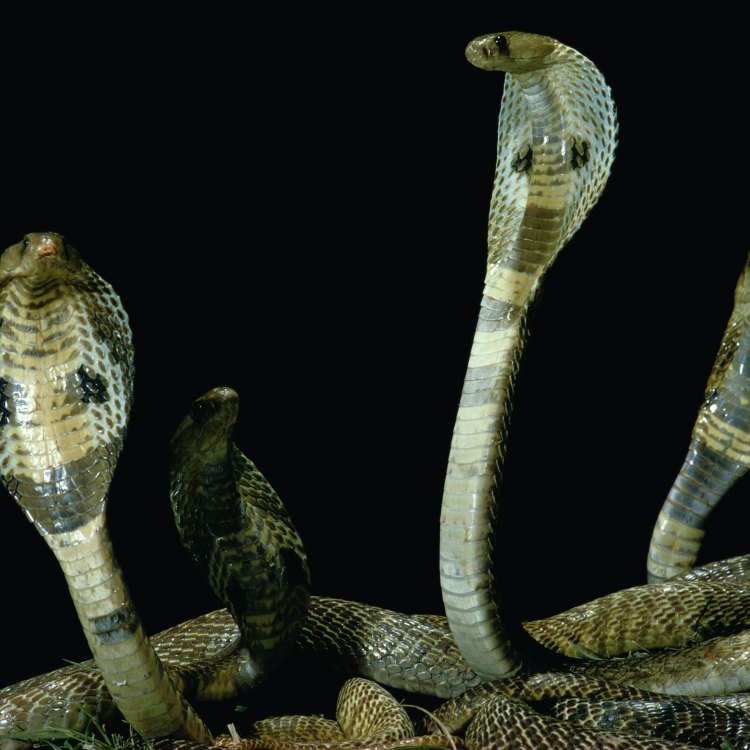
Egyptian Cobra
- Adult Size: Large, reaching lengths of up to 2-2.5 meters (6-8 feet)
- Average Lifespan: Around 20 years in the wild
- Reproduction: Oviparous (lays eggs)
- Reproductive Behavior: Mating usually occurs during the spring and summer seasons
- Sound or Call: Can produce a hissing sound as a warning when threatened
- Migration Pattern: No significant migration patterns
- Social Groups: Primarily solitary, but can gather in large numbers during mating season
- Behavior: Generally shy and elusive, but can become aggressive when threatened
- Threats: Habitat loss, illegal trade for their venom, and persecution by humans
- Conservation Status: Least Concern
- Impact on Ecosystem: As predators, Egyptian cobras help control populations of small mammals and reptiles
- Human Use: Venom used for medical research and production of antivenom
- Distinctive Features: Characterized by a hood that opens when threatened
- Interesting Facts: 1. Egyptian cobras are iconic snakes in Egyptian culture and have been depicted in ancient Egyptian art and mythology. 2. They are highly venomous and their venom is neurotoxic, causing paralysis and potentially fatal respiratory failure in humans. 3. Despite their name, Egyptian cobras are not exclusive to Egypt and can be found in other countries in Africa and the Middle East.
- Predator: Large birds of prey and other snakes
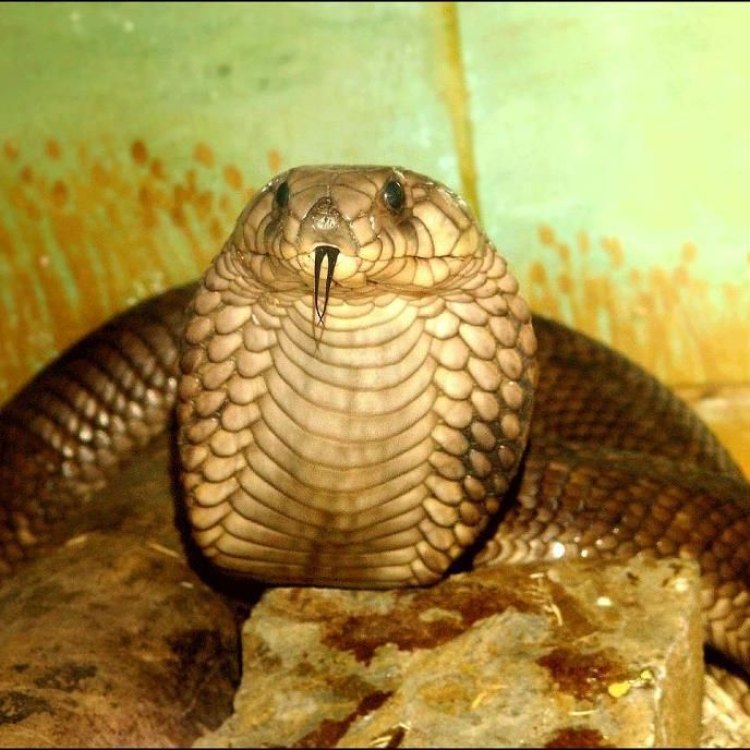
Naja haje
The Enigmatic Egyptian Cobra: A Deadly and Fascinating Creature
The Egyptian cobra, also known as the Egyptian cobra or the asp, is a species of venomous snake native to Africa and the Middle East. It is a highly adaptable and widely distributed species, making it a significant part of the ecosystem in its range. Its iconic hooded appearance and venomous nature have made it a subject of fascination and fear throughout human history.In this article, we will explore the unique features of the Egyptian cobra, its behavior, and its impact on the ecosystem and human society PeaceOfAnimals.Com.
Physical Characteristics and Habitat
The Egyptian cobra is a large snake, reaching lengths of up to 2-2.5 meters (6-8 feet) when fully grown. It has a slender and graceful body with smooth scales, and its color can vary from yellowish-brown to dark brown or black. It is easily recognizable by its distinctive hood, which can expand when the snake feels threatened. This adaptation gives it a menacing appearance and serves as a warning to potential predators.These snakes are found in a variety of habitats, including savannas, grasslands, and semi-arid regions. They are also known to thrive in agricultural and urban areas, making them a common sight near human settlements.
Reproduction and Behavior
Like most snakes, Egyptian cobras are oviparous, meaning they lay eggs. Mating usually occurs during the spring and summer seasons, with females laying a clutch of 10-20 eggs in a secluded spot Electric Eel. The incubation period can last up to two months, after which the hatchlings emerge.These snakes are primarily solitary creatures, but during the breeding season, they can gather in large numbers. They are generally shy and elusive, preferring to avoid confrontation with humans or other animals. However, when threatened, they can become aggressive and may strike with their venomous bite.
Natural Predators
The Egyptian cobra, being a top predator in its ecosystem, has few natural predators. Large birds of prey, such as eagles and hawks, are known to hunt and feed on these snakes. Other snakes, including the black mamba, may also prey on Egyptian cobras.However, the biggest threat to these snakes comes from humans. Oftentimes, they are killed out of fear or as retribution for their potentially fatal venom.
Venom and Human Use
The venom of the Egyptian cobra is highly potent and is primarily neurotoxic, meaning it affects the nervous system. A single bite from this snake can cause paralysis, respiratory failure, and even death. Its venom is not only a defense mechanism but also a way to subdue prey, which consists mainly of small mammals and reptiles.Despite its deadly nature, the venom of the Egyptian cobra has also found important use in human society. It is used in medical research to develop treatments and antivenom for snake bites. In some cultures, the venom is also used in traditional medicine, although its effectiveness is not scientifically proven.
Human-Egyptian Cobra Interactions
The Egyptian cobra has a significant impact on human society, both positive and negative. As mentioned earlier, its venom is used in medical research and the production of antivenom. These snakes also play a crucial role in controlling populations of small mammals and reptiles, making them valuable contributors to the ecosystem.However, they also face many threats from humans, including habitat loss due to agricultural and urban development, illegal trade for their venom, and persecution out of fear. These threats have led to a decline in their numbers in some parts of their range, classifying them as a species of Least Concern on the IUCN Red List.
Cultural Significance and Fascinating Facts
Egyptian cobras hold a special place in Egyptian culture. They were revered in ancient Egyptian civilization and are depicted in many pieces of art, including hieroglyphs. In Egyptian mythology, the serpent god Apophis is often portrayed as an Egyptian cobra, representing chaos and destruction.Apart from their cultural significance, there are some interesting facts about Egyptian cobras that add to their mystique. For instance, they are highly intelligent creatures, capable of learning and recognizing their handlers, making them popular subjects in snake charming acts. They are also known to produce a hissing sound as a warning when feeling threatened, giving them the nickname "hissing asp."
In Conclusion
The Egyptian cobra is a complex and enigmatic creature, with its symbolic significance and deadly nature. As a top predator, it plays a vital role in the ecosystem, and its venom has found important use in human society. However, these versatile creatures face many threats and are in need of conservation efforts to ensure their survival.As we continue to learn more about the Egyptian cobra, we can appreciate its unique features and important role in the natural world. And as long as we respect and protect these fascinating creatures, we can coexist with them peacefully.

The Deadly Egyptian Cobra: An Elusive Predator of the Desert
Disclaimer: The content provided is for informational purposes only. We cannot guarantee the accuracy of the information on this page 100%. All information provided here may change without prior notice.

